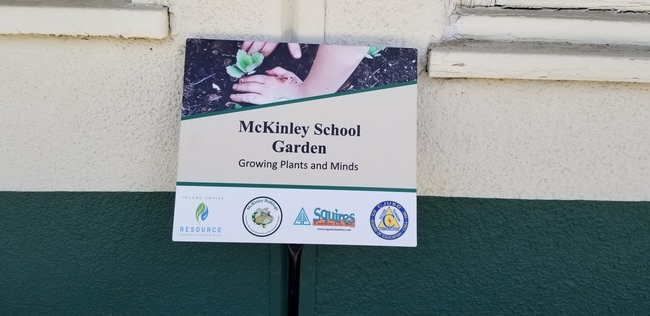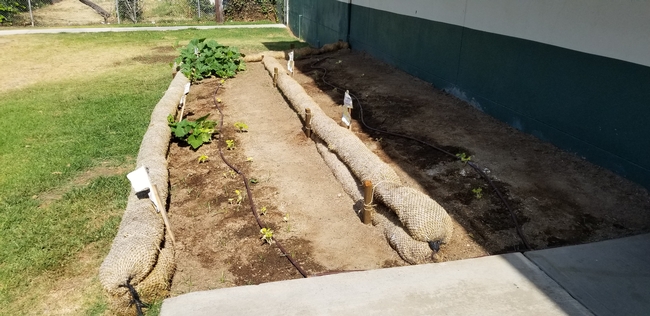Sandy Szukalski and I enjoyed a visit to the McKinley Elementary School Garden this past week. Virgina 'Gin' McMillin, the Garden Director had an amazing amount of enthusiasm for the garden, the children, her IERCD grant, the future pollinator garden and just the future of the McKinley school garden in general is was infectious!
Gin asked us to come visit so she could show us her failing pumpkin plants and get some advice. It seemed as if the plants were not going to thrive. They were undersized, yellowing, and had a bit of fungus. The pumpkins were planted by the children on Earth Day (late April). The school district had provided a 50/50 mix, but it seems as if it was not very nutritious and may have had unhealthy plant material. The plants were also planted too close together for pumpkins.
Below is a summary of the information we shared with her and a few more bits that I hope will help your pumpkin garden thrive:
- Build up mounds for each plant - plant mid-July - August depending on growth projections. If pumpkins ripen on the vine too early they may get fungal rot.
- Plant plants 6-8' apart, using 3-5 seeds in each mound. Heavily mulch.
-Introduce nice soil to the pumpkin mounds. Especially if your current soil is not very nutritious.
- Use mulch to help keep moisture in and reduce weeds. That will also provide a nice bed for pumpkins later.
- Once plants germinate and are 2-3" tall, begin thinning out less healthy plants, leaving the healthies 2 plants.
- Pumpkins need to be fed. Use nitrogen for early plant growth then when the plants are larger but before they bloom she should use phosphorus. Alternatively, you can use the more easily accessible forms such as coffee grains or manure. Feed at regular intervals.
- Water in the morning (keeping the soil moist until germination), and if it gets very hot, in the afternoon as well. Water deeply 1".
- Be patient for fruit - mail and female blossoms are needed. Don't use insecticide. The plant needs bees.
- Snip off fuzzy ends of vine after a few pumpkins have formed to focus plant energy on fruit. Pruning vines will help with that as well. As fruit develops, turn (with great care) to encourage nice shape. Slip a thin board or plastic mesh under pumpkins to protect them.
- There is an excellent problem diagnosis for pumpkins from 'California Master Gardener Handbook', page 394 and a list of recommended varieties from page, 395. This book - it has a wealth of information!
Happy Gardening - stay hydrated!

